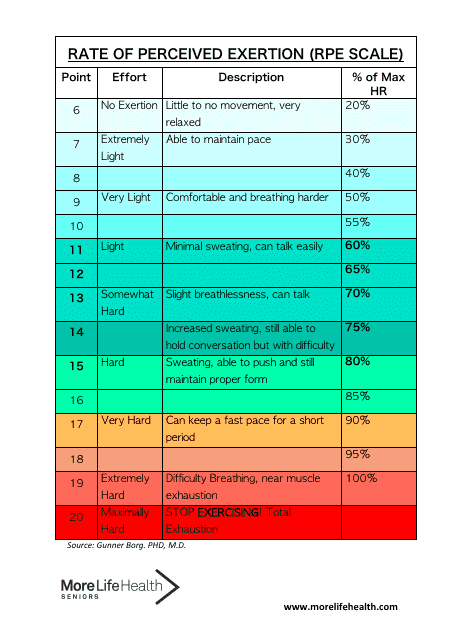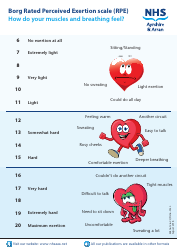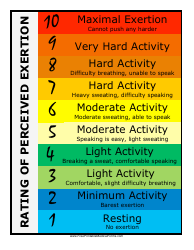Rate of Perceived Exertion (Rpe Scale) Chart
The Rate of Perceived Exertion (RPE) scale chart is used to gauge the level of exertion or intensity during physical activity. It helps individuals assess and communicate how hard they feel their exercise is, based on a scale ranging from 0 to 10. The RPE scale can be useful in monitoring and adjusting the intensity of workouts to optimize fitness and performance.
The Rate of Perceived Exertion (RPE) scale is used by individuals to subjectively rate their own level of effort during physical activity. There is no specific entity or organization that files the RPE scale chart. It is a tool that can be used by individuals, athletes, trainers, or healthcare professionals to track and monitor their own exertion levels.
FAQ
Q: What is the RPE scale?
A: The RPE scale is a way to measure the intensity of physical activity.
Q: How does the RPE scale work?
A: The RPE scale is based on a person's perception of how hard they feel their body is working during exercise.
Q: What is the purpose of the RPE scale?
A: The purpose of the RPE scale is to help individuals monitor and adjust the intensity of their physical activity.
Q: How is the RPE scale measured?
A: The RPE scale is typically measured on a scale of 0-10, with 0 being no exertion and 10 being maximal exertion.
Q: Why is the RPE scale important?
A: The RPE scale is important because it allows individuals to gauge their level of effort during physical activity and make adjustments as needed.
Q: Who can use the RPE scale?
A: Anyone can use the RPE scale to monitor their level of exertion during physical activity.
Q: Is the RPE scale accurate?
A: The accuracy of the RPE scale can vary from person to person, but it is generally a useful tool for monitoring exercise intensity.



